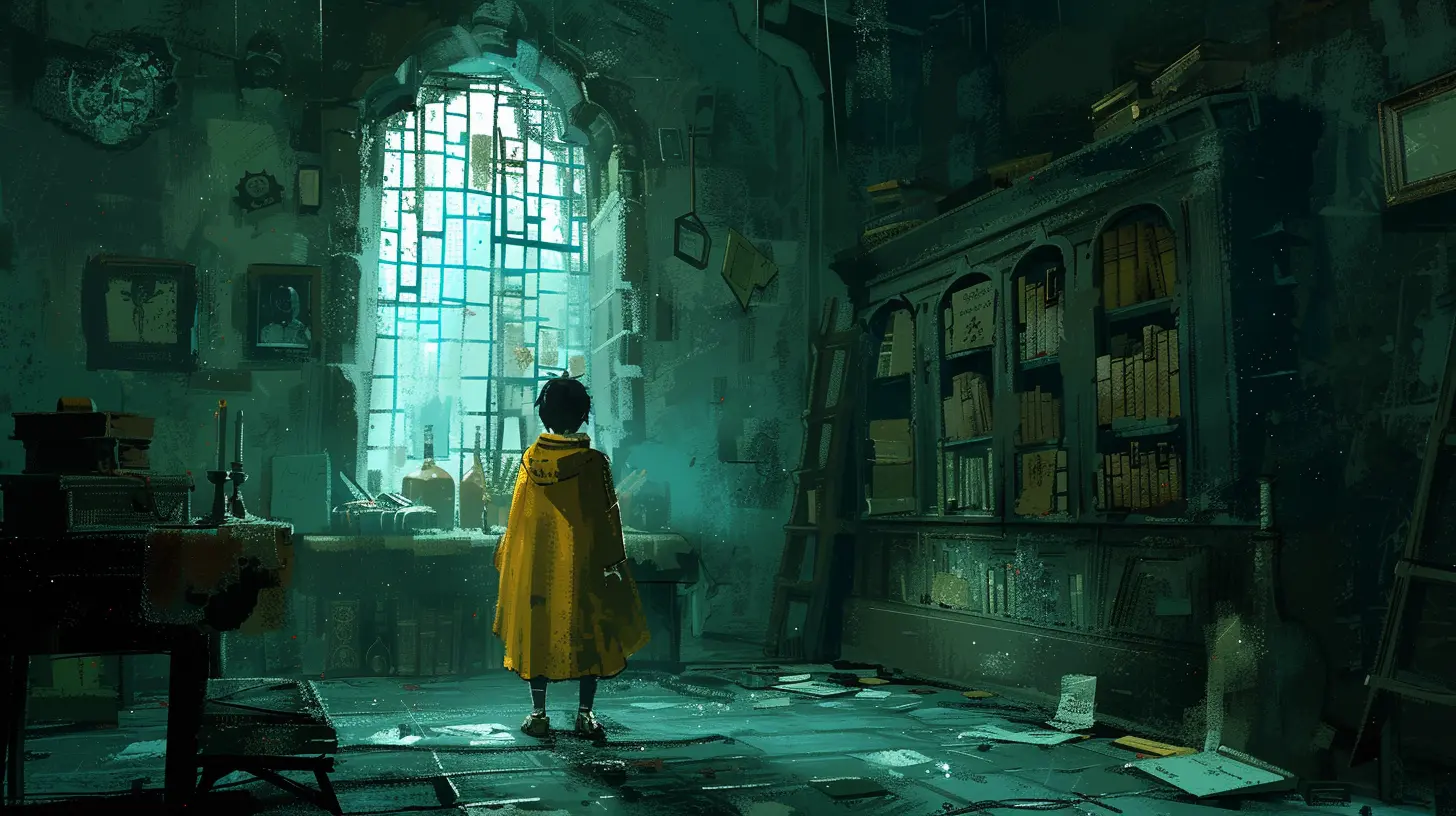Exploring the Role of the Unreliable Narrator in Interactive Games
2 June 2025
Interactive games have evolved into a storytelling powerhouse. Thanks to advancements in technology and creative design, video games are no longer just about shooting enemies or solving puzzles; they’re about crafting experiences that resonate with players. One of the most fascinating storytelling tools that game developers use is the unreliable narrator.
If you’ve ever played a game that left you questioning everything you just experienced, chances are you’ve encountered one. But why do unreliable narrators work so well in interactive games? And how do they shape the gaming experience? Let’s dive into the world of unreliable narrators and uncover their impact.
What Is an Unreliable Narrator?
First things first: what exactly is an unreliable narrator? In simple terms, it’s a narrator you can’t fully trust. They might distort the truth, leave out crucial details, or flat-out lie to you. It’s like when your friend tells you a story but conveniently leaves out the embarrassing parts about themselves—you can’t take it at face value.In the context of games, the unreliable narrator is often woven into the narrative to introduce mystery or to make the story more engaging. The beauty of this technique lies in its ability to make you second-guess everything you hear, see, or do within the game. It’s a mix of intrigue and skepticism, and it pulls players deeper into the experience.
Why Are Unreliable Narrators So Effective in Games?
Imagine you’re watching a movie with an unreliable narrator. Sure, it’s compelling, but ultimately, you’re just a passive observer. In interactive games, however, the stakes are raised because you are part of the story. The decisions you make, the paths you take, and the conclusions you draw are all influenced by what the narrator tells you. And when that narrator turns out to be unreliable, the emotional payoff can be immense.Here are a few reasons why this storytelling device works so well in games:
1. It Keeps You on Your Toes
Let’s be real—no one likes predictable stories. A twisty narrative, complete with a narrator who bends the truth, keeps you guessing. As a player, you’re constantly questioning: Am I doing the right thing? Can I trust what I just learned? This sense of unease heightens the tension and keeps you emotionally invested.2. It Enhances Player Immersion
Games thrive on immersion. When you can’t trust the narrator, you’re forced to pay closer attention to every detail. Every line of dialogue, every visual clue, every subtle hint suddenly feels important. You're not just playing the game; you're analyzing it, trying to piece together what’s real and what’s not.3. It Adds Emotional Depth
Unreliable narrators often come with complex backstories. They’re flawed, damaged, or have ulterior motives. This adds layers to the narrative and makes the story feel more “human.” And let’s face it—nobody’s perfect in real life either, right? These imperfections make the characters and the game as a whole feel more relatable.
Memorable Examples of Unreliable Narrators in Interactive Games
Some of the most iconic games in history owe their success to their unreliable narrators. Let’s take a look at a few standouts that nailed this storytelling device.1. Bioshock: Andrew Ryan
"Would you kindly?” If those words send a chill down your spine, you’re probably familiar with Bioshock. The game is a masterclass in using an unreliable narrator to mess with players’ heads. For most of the game, you believe you’re a free agent, making your own choices. But when the truth about Andrew Ryan is revealed, you realize you’ve been manipulated all along. It’s a gut-punch moment that redefines the entire game.2. Spec Ops: The Line: Captain Martin Walker
Spec Ops: The Line is a brutal, emotionally charged game that uses its protagonist, Captain Walker, as an unreliable narrator. As the story unfolds, you begin to realize that Walker’s perspective is warped. His descent into madness makes you question whether his actions are heroic or horrific—and whether you, as the player, are complicit.3. Silent Hill 2: James Sunderland
Silent Hill is no stranger to messing with players’ perceptions, but Silent Hill 2 takes it to another level. James Sunderland, the protagonist, hides a dark secret—a secret he doesn’t even fully acknowledge to himself. As you navigate the foggy, terrifying world of Silent Hill, the truth emerges piece by piece, leaving you questioning James' reliability as a narrator.4. The Stanley Parable: The Narrator
This one flips the concept of an unreliable narrator on its head. The Narrator in The Stanley Parable constantly tries to guide you, but you have the option to defy him. By doing so, you reveal just how manipulative and petty he can be. It’s a hilarious, meta take on the trope, and one that makes you question the nature of storytelling in games altogether.
How Developers Pull It Off: The Mechanics Behind the Madness
Creating an unreliable narrator isn’t as simple as just writing a deceptive character. Game developers have to carefully balance gameplay, narrative, and player perception to pull it off effectively. Here’s how they make it work:1. Subtle Contradictions in the Story
Developers often plant subtle clues that something’s off. Maybe a character says one thing, but their actions tell another story. Or perhaps the environment suggests a truth that the narrator tries to deny. These contradictions quietly nudge players to question what they’re being told.2. Twists That Reshape the Entire Game
The best unreliable narrators don’t just lie for the sake of it. Their deception serves a purpose, leading to a big reveal that reframes everything you thought you knew. It’s like pulling the rug out from under you—in the best way possible.3. Leveraging Player Choices
Some games use player decisions to complicate matters even further. For example, what if you make a choice based on false information from the narrator? These moments make you feel the full impact of their unreliability, driving home the emotional weight of the story.4. Psychological Storytelling
Games with unreliable narrators often delve into themes of memory, trauma, or mental health. By using these themes, developers can blur the line between reality and perception, making it harder for players to discern what’s true.The Impact on Players: Why We Love It (Even When It Hurts)
Unreliable narrators don’t just mess with our heads—they make us care. They challenge us to think critically, piece together the story ourselves, and confront uncomfortable truths. And while they might frustrate or confuse us in the moment, they leave a lasting impression. Games that use this technique are the ones we end up talking about for years.Think about it. When was the last time you gushed to a friend about a perfectly straightforward game? Probably not often. But an unreliable narrator? That’s something you can debate, analyze, and theorize about for hours. It’s the kind of storytelling that sticks with you.
Conclusion
The role of the unreliable narrator in interactive games is nothing short of brilliant. By making us question everything we see and hear, these narrators elevate the gaming experience into something deeper and more thought-provoking. Whether they’re twisting the truth for a jaw-dropping reveal or forcing us to confront the blurred lines of perception, unreliable narrators add complexity and intrigue that few other storytelling devices can match.So the next time you find yourself doubting a narrator’s words in a game, just remember: it’s all part of the ride. Lean into the uncertainty, embrace the twists, and enjoy the chaos. After all, isn’t that why we play games in the first place?
all images in this post were generated using AI tools
Category:
Interactive StorytellingAuthor:

Stephanie Abbott
Discussion
rate this article
3 comments
Phoenix McNab
Unreliable narrators elevate interactive games, challenging players to question perceptions and choices. This layer of complexity not only deepens immersion but also enhances storytelling, making every twist unpredictable and thrilling.
June 11, 2025 at 4:48 PM

Stephanie Abbott
Thank you! I completely agree—unreliable narrators indeed add depth and intrigue, prompting players to actively engage with the narrative and question their decisions. This dynamic makes for a truly immersive experience.
Emmeline McCarron
Plot twists are my favorite plot twists!
June 4, 2025 at 4:22 AM

Stephanie Abbott
Thank you! Unreliable narrators add layers of complexity and surprise, making plot twists even more impactful in interactive games.
Alexia Daniels
What a fun dive into the chaotic world of unreliable narrators! Interactive games thrive on surprises—keep questioning everything, and enjoy the wild ride! Can't wait for your next piece!
June 2, 2025 at 4:00 PM

Stephanie Abbott
Thank you! I'm thrilled you enjoyed the dive into this fascinating topic. Stay tuned for more surprises ahead!



